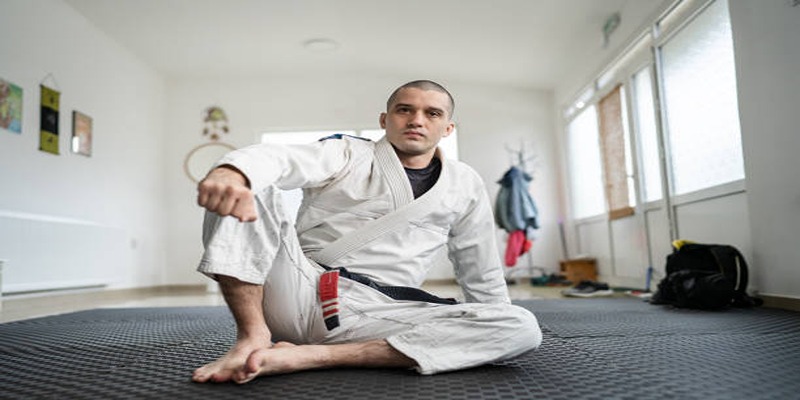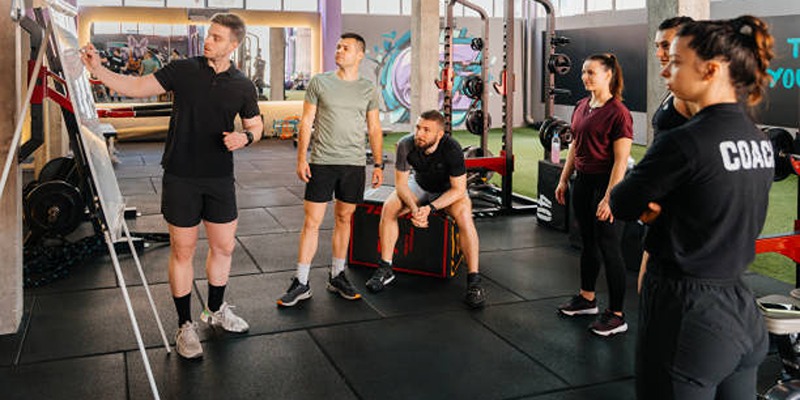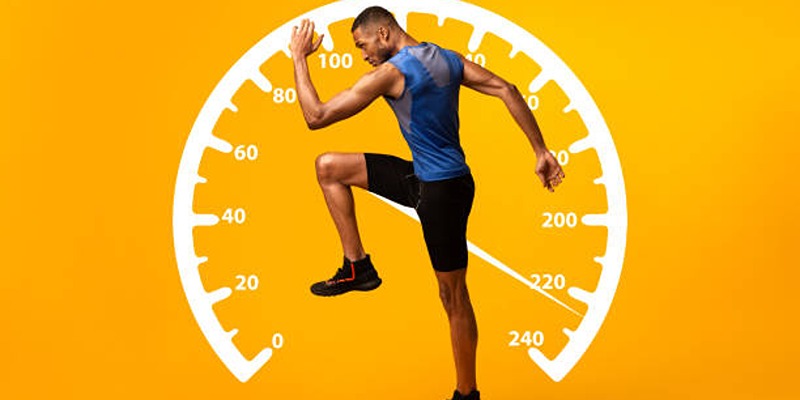Lung hyperinflation reduces Airflow and makes breathing more difficult. Many times, it affects those with chronic pulmonary disorders. Exhalation becomes difficult when the lungs remain abnormally inflated. It leads to shortness of breath and fatigue. Reducing trapped air increases lung function and oxygen flow. Understanding common treatments can help patients breathe more easily.
Medical experts handle the problem using several techniques. These cover medicines, breathing exercises, and surgical possibilities. Early treatment reduces lung damage. Patients have increased vitality and find daily living once more enjoyable. Usually, common treatments to lower lung hyperinflation provide long-lasting relief. Patients must first learn lung hyperinflation treatment techniques to improve their health and make breathing easier.

Bronchodilators to Improve Airflow:
Bronchodilators open the airways by relaxing the surrounding muscles. Many times, doctors treat lung hyperinflation using them. These medicines assist the lungs in releasing air trapped within them. Inhaled bronchodilators deliver medication directly to affected areas. Bronchodilators are available in both short-acting and long-acting forms. Short-acting forms provide fast relief from dyspnea. Long-acting forms assist in the control of everyday symptoms. Many times, patients combine the two. Common medicines are beta-agonists and anticholinergics. They expand airways and hence relax bronchial muscles.
Frequent use helps to lower trapped air and enhances Airflow. Many patients report better breathing following use. Moreover, bronchodilators help to ease coughing and tightness. Doctors may adjust the dosage based on the patient's lung capacity. Using inhalers correctly is vital. Inappropriate usage can lower efficiency. One can aid by using a spacer along with an inhaler. Treatment approaches for lung hyperinflation depend mainly on bronchodilators. Usually, they come first in a treatment strategy meant to enhance lung performance and breathing.
Pulmonary Rehabilitation Programs:
For lung sufferers, pulmonary rehabilitation provides education, exercise, and support. These programs focus on energy conservation and effective breathing techniques. Exercise cuts tiredness and strengthens the lungs. Supervised exercises help patients to move without dyspnea. Sessions may include light resistance training, walking, or stationary cycling. Breathing exercises assist the lungs in discharging held air. Pursed-lip breathing enhances Airflow and slows down exhaled force. Diaphragmatic breathing reduces air trapping and helps the diaphragm to get stronger. Therapists help clients with the everyday application of these strategies.
Sessions of education cover pulmonary function and medicine use. Programs also include stress-relieving techniques and mental health support. Regular attendance enhances the daily quality of living. Patients claim more stamina and easier breathing. Rehab offers guides on avoiding triggers. One important way to naturally lower lung hyperinflation is via pulmonary rehabilitation. It helps those suffering from COPD and other chronic lung problems. Many times, doctors send patients to rehab following diagnosis or hospital stay.
Non-Invasive Ventilation Therapy:
Non-invasive ventilation lets one breathe without tubes or surgery. It moves Airflow using a mask. This therapy helps reduce carbon dioxide levels and lessens the difficulty breathing presents. The machine gently pushes pressurized air into the lungs. It releases trapped air and uniformly inflates the lungs. Among common equipment are CPAP and BiPAP machines. CPAP produces continuous air pressure. While exhaling, BiPAP lowers pressure; whilst inhaling, it increases it. Usually employed at night are these machines. They enhance the quality of sleep and help with dyspnea.
Patients with significant lung hyperinflation frequently feel better first thing in the morning. Doctors change the settings depending on symptoms and oxygen levels. Good effects depend on whether the masks fit the wearer. Correct device use requires training for users. This therapy supports weary breathing muscles and increases Airflow. Many lung hyperinflation sufferers find great benefits from consistent use. For those requiring intensive respiratory support, it forms part of lung hyperinflation treatment approaches.
Surgical Options for Severe Cases:
Certain extreme lung hyperinflation sufferers could require surgery. Surgery removes lung-affected sections. It promotes better expansion of healthy lung regions. The most often used is lung volume reduction surgery (LVRS). It aims at overinflated lung tissue that catches air. Eliminating these spots increases Airflow and lowers the pressure on healthy tissue. A further choice is a bullectomy. It removes bullae, big air sacs that develop in injured lungs. These sacs impede regular breathing.
In advanced situations, some individuals could think about lung transplants—Doctors reserve surgery for patients who do not improve with other treatments. Doctors choose the appropriate patients by use of imaging and lung testing. Breathing exercises and rehabilitation constitute part of recovery. Surgery requires careful management and carries certain risks. For some, nevertheless, it results in significant breathing improvement. When alternative treatments are insufficient to naturally lower lung hyperinflation, surgical care is a last-resort solution.
Lifestyle Changes and Breathing Exercises:
Lifestyle changes can enhance the effectiveness of other lung hyperinflation treatments. The first and most critical action is to stop smoking. Smoking aggravates air trapping and ruins the lungs. A good diet increases energy and supports lung ability. Control of weight lowers chest and lung pressure. Consistent mild exercise improves muscle strength and endurance. Steering clear of air pollution protects lung tissue. Exercises in breathing help one to empty one's lungs.
Pursed-lip breathing slows exhalation and helps release trapped air. It helps expel trapped air from the lungs. Diaphragmatic breathing teaches lower lung-based deeper breaths. Daily practice of both helps breathing over time. Developing a schedule helps one turn breathing practice into a habit. Moreover, included in yoga and tai chi are useful breathing exercises. Learning these techniques helps patients to feel more in control. Breathing treatments for lung hyperinflation mostly consist of these activities. Without medicines or equipment, they assist in increasing lung efficiency and oxygen flow.

Ongoing Monitoring and Medication Management:
Managing medications helps to control symptoms. Frequent visits monitor lung capacity and symptoms. Spirometry exams let doctors gauge lung air capacity. Their treatment changes depending on test findings. It is vital to follow directions on medicines. Patients must grasp their course of treatment. Patients must follow their inhaler routines every day. Some medications are more effective when taken simultaneously every day. Maintaining a symptom diary enables clinicians to see early changes.
Patients should not ignore early signs of worsening lung hyperinflation. Doctors may adjust or add medications based on the patient's condition. Patients must report any side effects immediately. In some cases, doctors may prescribe oxygen therapy to improve breathing. Home oxygen boosts sleep and energy. An effective care team includes doctors, nurses, and respiratory therapists. Coordinated care improves control approaches for treating lung hyperinflation. Consistent monitoring over time leads to better long-term outcomes. Regular monitoring maintains lungs functioning effectively and helps prevent major flare-ups.
Conclusion:
Control of lung hyperinflation enhances the quality of living and breathing. There are several possible treatments. Breathing apparatuses, rehab, and bronchodilators all assist in clearing trapped air. Other patients gain from oxygen support or surgery. Additionally, good habits and breathing exercises are very important. Using a care team guarantees the correct strategy is applied. Reducing lung hyperinflation naturally increases comfort and energy levels. Early intervention does make a difference. Learning techniques of lung hyperinflation treatment enables patients to live better with fewer problems. Explore available treatment options today to help you breathe comfortably and live better.












